Headaches and migraines affect millions of people worldwide, often disrupting daily activities and diminishing overall quality of life. With the pressures of modern living—from lengthy work hours to constant screen time—these conditions have become increasingly common and difficult to manage. Although traditional medications and treatments can be effective, more and more individuals are seeking alternative methods to alleviate pain and reduce reliance on pharmaceuticals.
Enter Pulse Align, a non-invasive technology that has gained attention for its potential to provide targeted headache and migraine relief. By harnessing cutting-edge therapeutic principles, Pulse Align offers a fresh approach to managing these widespread issues without the need for strong prescription drugs or invasive procedures.
In this comprehensive guide, we’ll delve into everything you need to know about Pulse Align for headache and migraine relief. We’ll explore how the technology works, review its potential benefits, discuss how to incorporate it into your wellness routine, and compare it with other conventional and alternative treatment options. Whether you experience occasional tension headaches or debilitating migraines, this guide aims to equip you with the knowledge and insights needed to make an informed decision about Pulse Align as a viable solution for lasting relief.
Headaches and migraines aren’t always just about pain signals; they can often stem from chronic muscle tension and poor posture. When the body is misaligned, the head, neck, and shoulders bear uneven strain—leading to increased tension, inflammation, and discomfort. Over time, this strain can trigger or worsen headaches and migraines. By focusing on the body’s muscle tone management center and improving postural alignment, it’s possible to address the root causes of these issues rather than simply masking their symptoms.
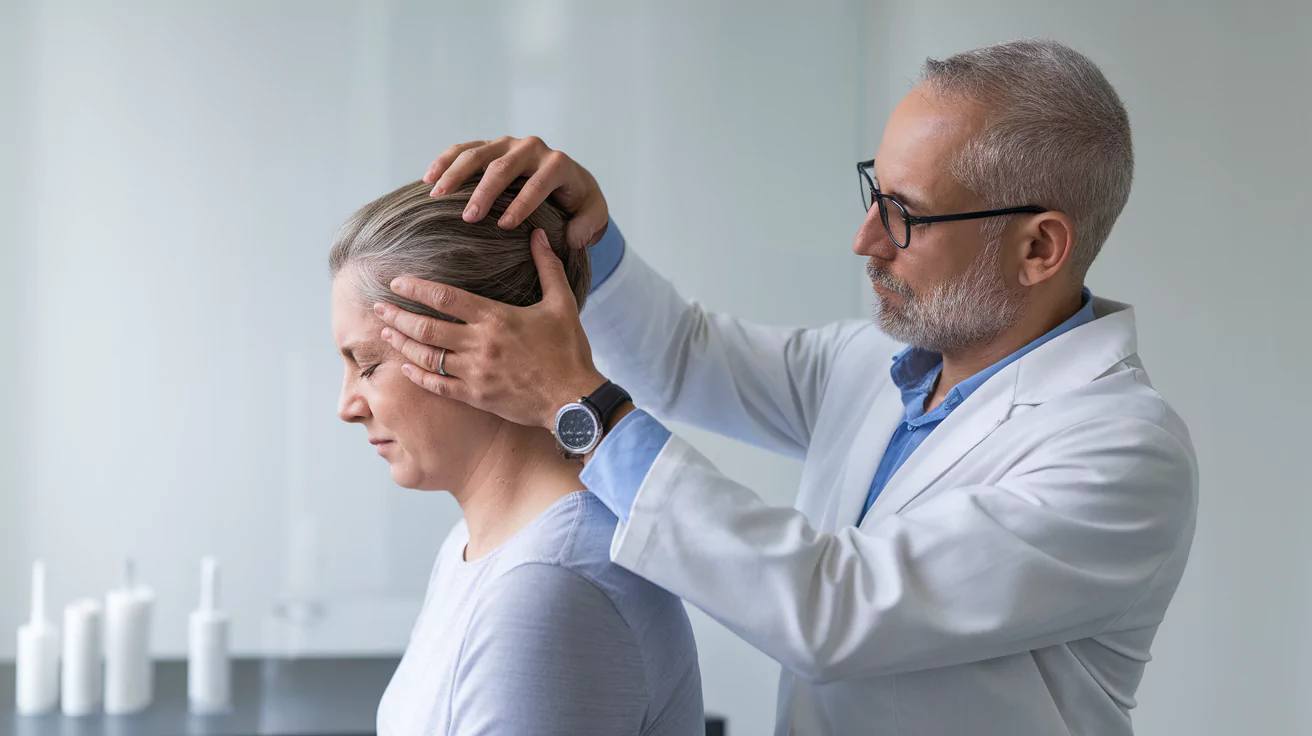
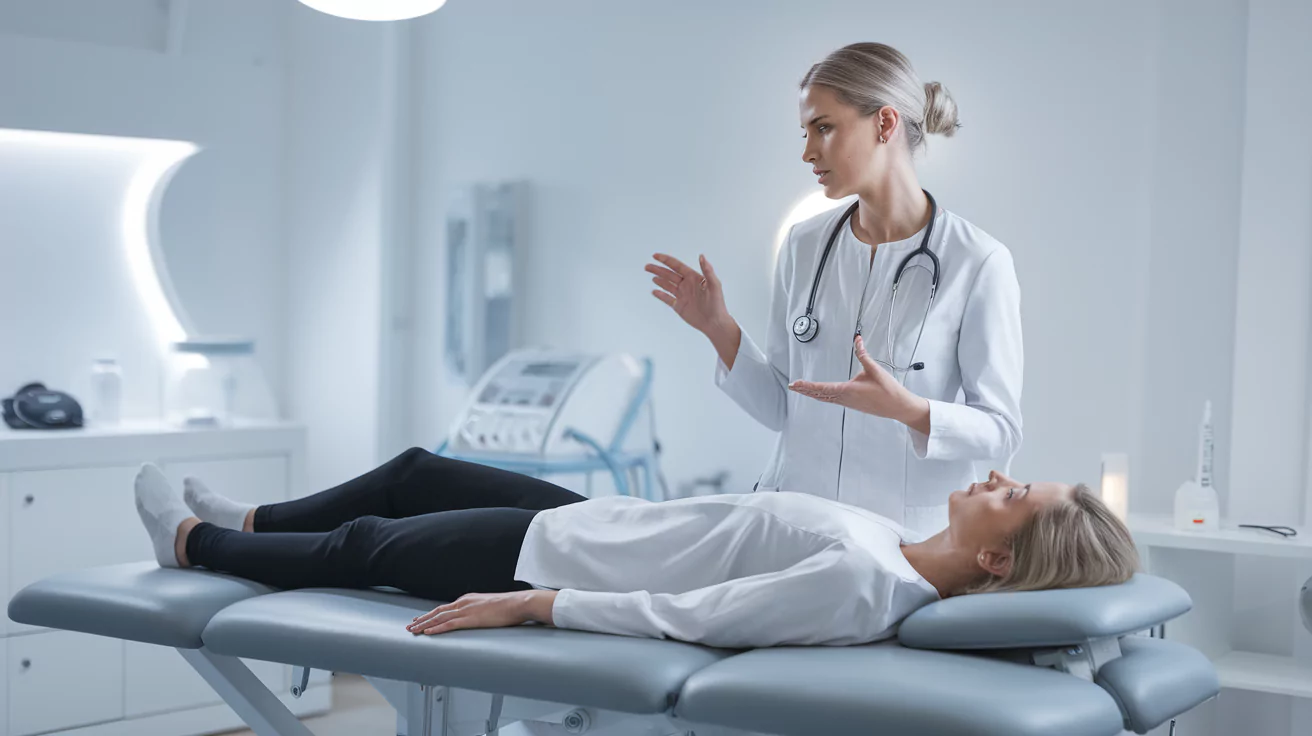
At a Pulse Align Clinic, technicians employ an innovative approach designed to recalibrate muscle tone and correct postural imbalances. The therapy involves carefully administered, non-invasive and gentle impulses—applied at strategic points on the head, neck, and back—to guide muscles into their optimal tension state. This process helps:
Targeted pulses work on tightening or relaxing specific muscle groups, reducing the strain that contributes to headaches.
By resetting your muscle tone management center, Pulse Align fosters a stable foundation for the head and neck.
With improved alignment and balanced muscle activity, tension points often linked to headaches and migraines can gradually diminish.
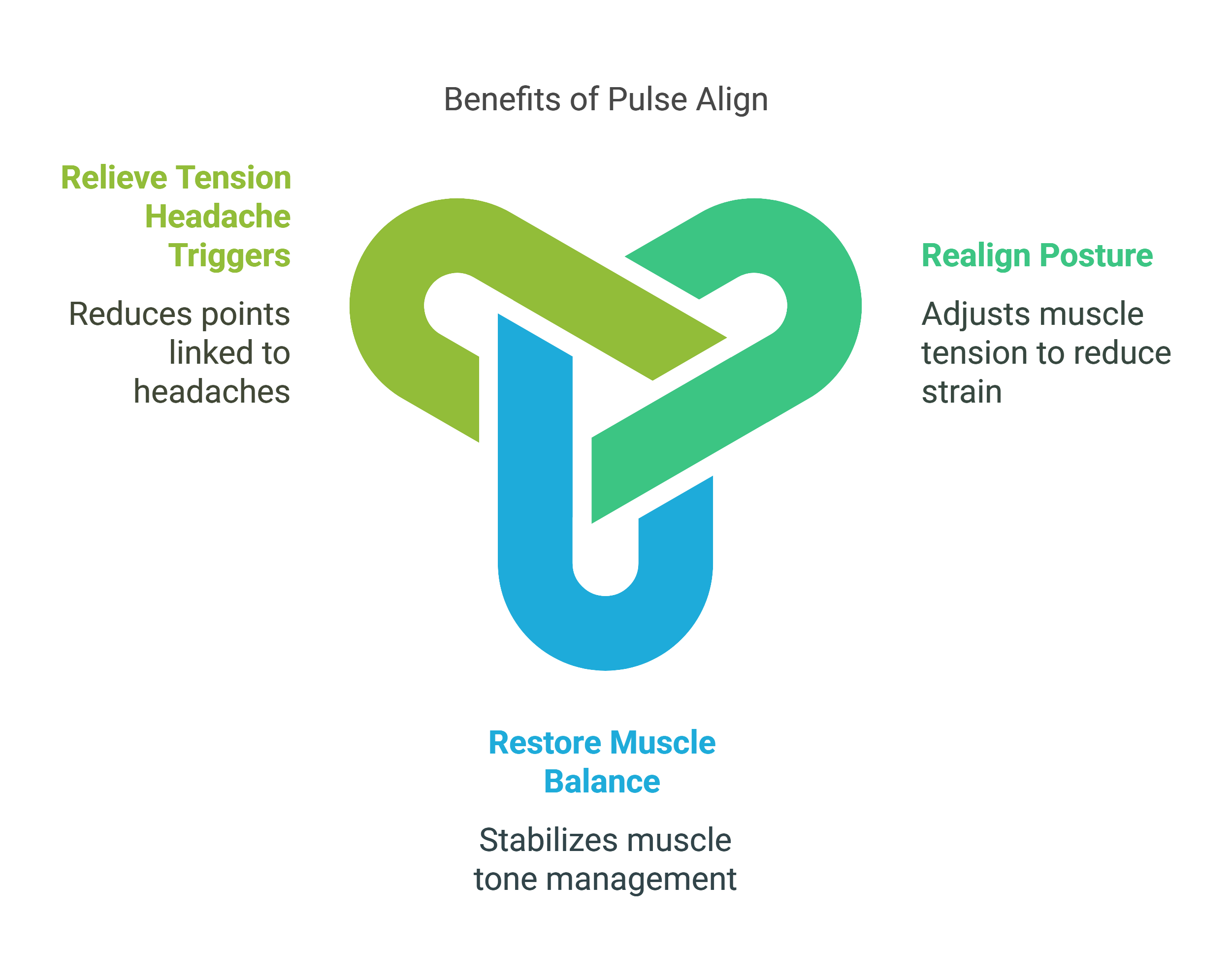
Your first visit to a Pulse Align Clinic includes a thorough evaluation of your posture, muscle tension levels, and headache history.
Skilled professionals apply Pulse Align therapy in a controlled setting, targeting your specific alignment and tension points.
You’ll receive personalized exercises and posture tips, as well as recommendations for continued at-home Pulse Align use to maintain consistent improvement.
Pulse Align’s unique focus on muscle tone regulation and postural recalibration stems from extensive research in biomechanics, physiotherapy, and headache management. This advanced therapy offers several key advantages:
Pulse Align avoids the risks associated with surgeries or injections.
By tackling muscle tension and alignment issues, many patients find themselves less dependent on pain relievers.
Proper posture and balanced muscle tone can reduce both the frequency and severity of headaches over time.
Improved alignment often translates to better overall mobility, posture, and daily comfort.
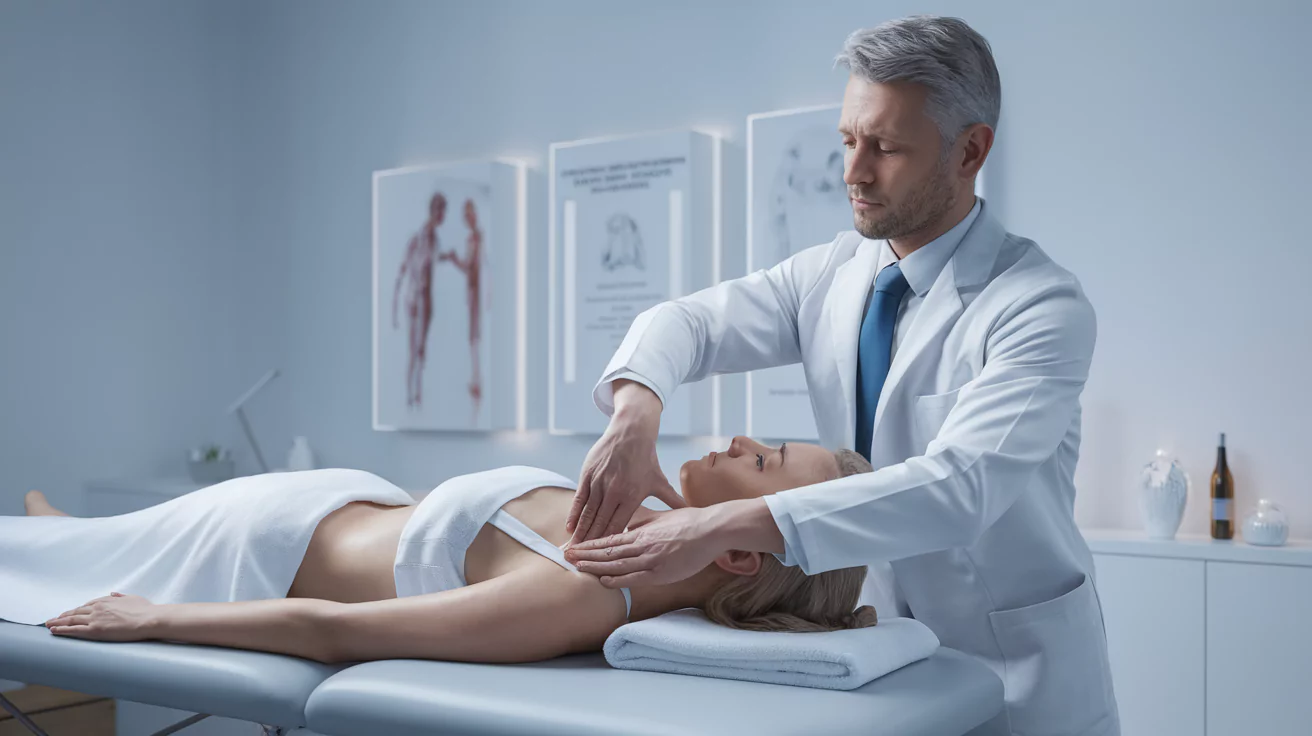
Massage therapy involves manipulating the soft tissues of the body to alleviate tension, promote relaxation, and improve circulation. Several techniques can be particularly useful for headache relief, including Swedish massage, deep tissue massage, and trigger-point therapy.

Herbal remedies and essential oils offer a more natural route for individuals seeking to manage headaches and migraines. Commonly used options include:
When seeking relief from headaches and migraines, understanding the differences between various treatment options is crucial. This section provides a comprehensive comparison between Pulse Align and conventional alternative approaches—Acupuncture, Massage Therapy, and Herbal Remedies—focusing on their mechanisms of action, invasiveness, potential side effects, and costs. Additionally, we highlight how Pulse Align stands out as a simple, amazing, and accessible solution that is often more affordable than traditional alternatives.
Feature | Pules Align | Acupuncture | Massage Therapy | Herbal Remedies |
Mechanism of Action | Manages muscle tone and recalibrates posture through gentle impulses to specific areas, reducing muscle tension and improving alignment. | Involves inserting fine needles into specific body points to balance energy flow and stimulate nerve pathways. | Manipulates soft tissues using techniques like deep tissue, Swedish, or trigger-point massage to relieve muscle tension and improve circulation. | Utilizes plants and essential oils (e.g., peppermint, lavender) with anti-inflammatory and muscle-relaxant properties to prevent or lessen headache severity. |
Invasiveness | Non-invasive – No needles, incisions, or surgical procedures required. | Minimally invasive – Involves needle insertion, which can cause minor discomfort or bruising. | Non-invasive – Involves physical manipulation without penetrating the skin. | Non-invasive – Involves ingestion or topical application of herbs and oils. |
Potential Side Effects | Minimal – Limited reported side effects when administered by certified professionals. | Mild – Possible bruising, minor discomfort, or rare infections if not performed properly. | Temporary soreness or bruising – Some individuals may experience mild discomfort post-session. | Varied – Potential allergic reactions or interactions with medications; generally well-tolerated when used appropriately. |
Cost | Affordable – Generally lower overhead costs, making regular sessions budget-friendly. | Moderate to High – Costs vary based on practitioner expertise and location. | Variable – Prices depend on type of massage, session length, and geographic area. | Low to Moderate – Some herbs and oils are inexpensive, but high-quality products and consistent use can add up. Insurance rarely covers these costs. |
Additional Benefits | Accessible and Easy to Use – Can be seamlessly integrated into daily routines with ongoing support from clinics. | Holistic Health – May improve overall energy balance and well-being beyond headache relief. | Stress Reduction and Improved Sleep – Enhances overall relaxation and quality of life. | Natural and Holistic – Offers a chemical-free option for those seeking natural remedies. |
Pulse Align employs advanced technology to manage muscle tone and recalibrate posture. By delivering gentle impulses to specific areas of the head, neck, and back, it helps realign muscles and improve postural balance. This targeted approach reduces muscle tension and strain, addressing the physical contributors to headaches and migraines rather than just masking the pain.
Acupuncture involves inserting fine needles into specific points along the body’s meridians to balance the flow of energy (qi). Modern interpretations suggest that acupuncture may stimulate nerve pathways and the release of endorphins, which can help alleviate pain and reduce headache frequency.
Massage therapy manipulates soft tissues to relieve muscle tension, improve circulation, and promote relaxation. Techniques such as deep tissue massage, Swedish massage, and trigger-point therapy focus on easing physical stressors that can lead to headaches.
Herbal treatments utilize plants and essential oils like peppermint, lavender, feverfew, and butterbur. These remedies often possess anti-inflammatory, muscle-relaxant, or stress-reducing properties, aiming to prevent or lessen the severity of headaches through natural means.
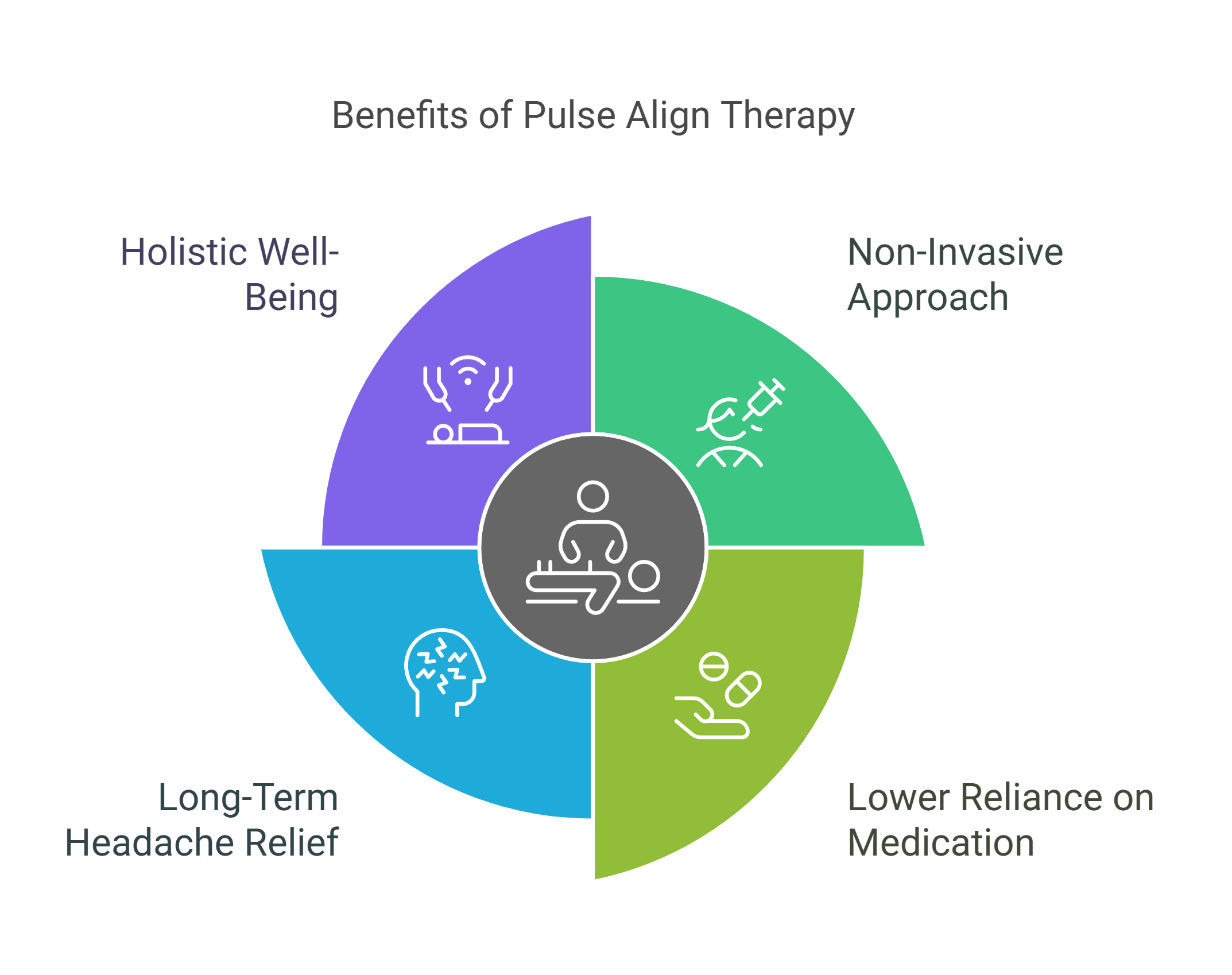
Pulse Align distinguishes itself through its simplicity, amazing effectiveness, and accessibility. Unlike other treatments that may require frequent visits, specialized practitioners, or ongoing expenses, Pulse Align offers a straightforward and user-friendly approach to headache and migraine relief. Its focus on muscle tone management and postural recalibration not only addresses the immediate discomfort but also promotes long-term well-being. By being more affordable and easier to incorporate into daily life, Pulse Align provides a compelling alternative for those seeking sustainable and cost-effective solutions to manage their headaches and migraines.
By comparing these factors—mechanism of action, invasiveness, potential side effects, and cost—it’s clear that Pulse Align offers a unique and advantageous option for individuals looking to alleviate headaches and migraines. Its combination of being simple, amazing, accessible, and more affordable makes Pulse Align a standout choice in the realm of headache and migraine management.
Pules Align has quickly gained traction among individuals seeking effective headache and migraine relief. Users consistently highlight several key benefits that make Pules Align a preferred choice:
Many users appreciate the straightforward application of the Pules Align device. Its user-friendly design allows for seamless integration into daily routines without the need for specialized training.
Compared to other alternative treatments, Pules Align is often praised for being a cost-effective solution. Users find that regular sessions are manageable within their budgets, making sustained use feasible for long-term relief.
A significant number of Pules Align users report a noticeable reduction in both the frequency and intensity of their headaches and migraines. Testimonials frequently mention lasting relief and improved quality of life.
Users value the non-invasive approach of Pules Align, appreciating the absence of needles, medications, or surgical procedures. This aspect is particularly appealing to those who prefer natural and gentle treatment methods.
Customer Support: Positive feedback often includes commendations for the excellent support provided by Pules Align Clinics. Users feel well-guided through their treatment plans and receive personalized care that enhances their overall experience.
Since starting Pules Align therapy, my migraines have become less frequent and less severe. It’s simple to use and fits perfectly into my busy schedule
I was skeptical at first, but Pules Align has truly transformed my headache management. It’s affordable and highly effective without any side effects
Conventional alternative treatments for headaches and migraines, such as acupuncture, massage therapy, and herbal remedies, also have a wealth of user reviews, each reflecting a range of experiences:
Pulse Align employs advanced technology to manage muscle tone and recalibrate posture. By delivering gentle impulses to specific areas of the head, neck, and back, it helps realign muscles and improve postural balance. This targeted approach reduces muscle tension and strain, addressing the physical contributors to headaches and migraines rather than just masking the pain.
Acupuncture involves inserting fine needles into specific points along the body’s meridians to balance the flow of energy (qi). Modern interpretations suggest that acupuncture may stimulate nerve pathways and the release of endorphins, which can help alleviate pain and reduce headache frequency.
Massage therapy manipulates soft tissues to relieve muscle tension, improve circulation, and promote relaxation. Techniques such as deep tissue massage, Swedish massage, and trigger-point therapy focus on easing physical stressors that can lead to headaches.
Herbal treatments utilize plants and essential oils like peppermint, lavender, feverfew, and butterbur. These remedies often possess anti-inflammatory, muscle-relaxant, or stress-reducing properties, aiming to prevent or lessen the severity of headaches through natural means.
When comparing user reviews of Pules Align with those of conventional alternatives, several trends emerge:
Pules Align users tend to express high levels of satisfaction due to its combination of affordability, ease of use, and effectiveness. Conventional alternatives receive positive feedback as well, but satisfaction can be more variable depending on the specific treatment and individual responses.
Pules Align is often lauded for its accessibility, allowing users to manage their headaches and migraines from the comfort of their homes. In contrast, treatments like acupuncture and massage therapy require appointments and visits to specialized practitioners, which can be less convenient for some individuals.
Many Pules Align users find it to be a more affordable option compared to ongoing costs associated with massage therapy sessions or purchasing high-quality herbal supplements. This financial aspect significantly contributes to the positive sentiment surrounding Pules Align.
Pules Align is praised for its minimal side effects, making it a safer option for long-term use. Conventional alternatives, while generally safe, sometimes come with minor side effects such as bruising from acupuncture or allergic reactions to herbal remedies, which can influence user satisfaction.
Pulse Align employs advanced technology to manage muscle tone and recalibrate posture. By delivering gentle impulses to specific areas of the head, neck, and back, it helps realign muscles and improve postural balance. This targeted approach reduces muscle tension and strain, addressing the physical contributors to headaches and migraines rather than just masking the pain.
Acupuncture involves inserting fine needles into specific points along the body’s meridians to balance the flow of energy (qi). Modern interpretations suggest that acupuncture may stimulate nerve pathways and the release of endorphins, which can help alleviate pain and reduce headache frequency.
Massage therapy manipulates soft tissues to relieve muscle tension, improve circulation, and promote relaxation. Techniques such as deep tissue massage, Swedish massage, and trigger-point therapy focus on easing physical stressors that can lead to headaches.
Herbal treatments utilize plants and essential oils like peppermint, lavender, feverfew, and butterbur. These remedies often possess anti-inflammatory, muscle-relaxant, or stress-reducing properties, aiming to prevent or lessen the severity of headaches through natural means.
User reviews and experiences play a crucial role in understanding the efficacy and appeal of headache and migraine treatments. Pules Align stands out for its simplicity, affordability, and effectiveness, garnering positive feedback from users who seek a non-invasive and convenient solution. While conventional alternatives like acupuncture, massage therapy, and herbal remedies also receive commendations for their benefits, Pules Align’s unique combination of accessibility and cost-effectiveness makes it a compelling option for many individuals looking to manage their headaches and migraines effectively.
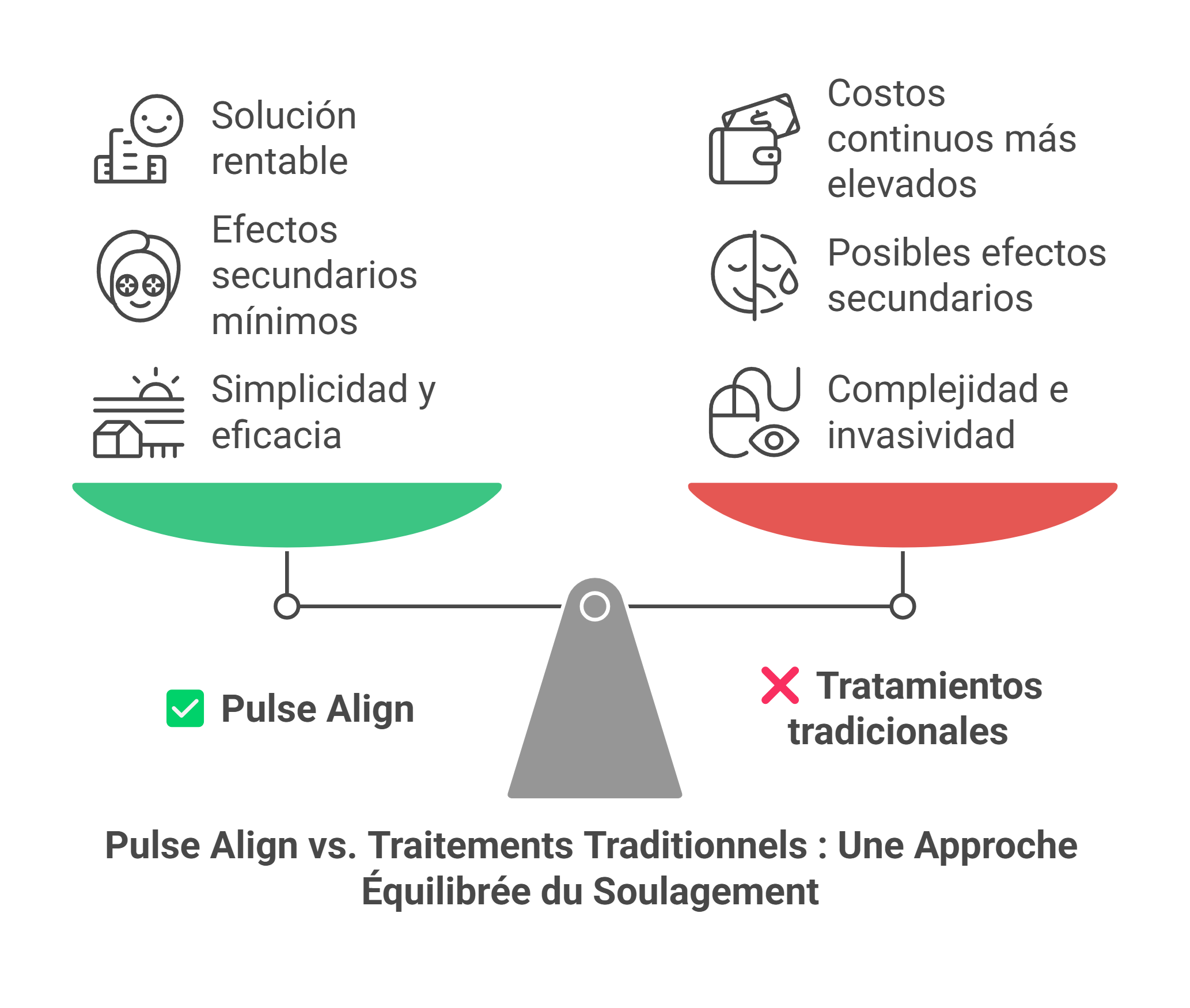
Managing headaches and migraines effectively requires more than just selecting a popular treatment—it demands a personalized approach tailored to your unique needs and circumstances. Understanding the significance of individualized treatment plans can significantly enhance the effectiveness of your headache and migraine relief strategy. This section explores why personalized plans are crucial and provides key factors to consider when choosing between Pules Align and conventional alternative treatments. Additionally, it underscores the importance of consulting with a healthcare professional to guide your decision-making process.
Headaches and migraines manifest differently in each individual, influenced by a variety of factors such as genetics, lifestyle, triggers, and overall health. A personalized treatment plan ensures that these unique aspects are addressed, leading to more effective and sustainable relief. Here’s why personalized plans are essential:
Holistic Health: Personalized plans often incorporate multiple aspects of your health, promoting overall well-being alongside headache and migraine relief.
Selecting the right treatment involves understanding the specific nature of your headaches or migraines. Consider the following when deciding between Pules Align and other conventional alternatives such as acupuncture, massage therapy, and herbal remedies:
Ideal for headaches and migraines stemming from muscle tension and poor posture. It effectively manages muscle tone and recalibrates posture to alleviate pain.
Particularly beneficial for tension-type headaches and stress-related migraines by relieving muscle tension and promoting relaxation.
Suitable for individuals seeking natural prevention and relief, especially those preferring non-device-based treatments to reduce inflammation and muscle tension.
Budget is a crucial factor in selecting a treatment plan. Understanding the cost implications can help you choose a method that is both effective and financially sustainable
Generally more affordable in the long run due to lower overhead costs and fewer ongoing expenses compared to frequent massage or acupuncture sessions.
Can become costly over time, especially with regular visits to specialists. The cumulative cost may be a deterrent for some individuals.
While initial costs may be low, high-quality products and consistent use can add up. Additionally, these expenses are rarely covered by insurance, making them a less economical option for long-term use.
Ease of access and convenience can significantly influence your treatment choice. Selecting a method that fits seamlessly into your daily life increases the likelihood of consistent use and better outcomes:
Highly accessible with the ability to use the device at home or on-the-go, eliminating the need for frequent appointments and making it a convenient option for busy individuals.
Require scheduling and traveling to clinics, which may be less convenient for some. Limited availability of qualified practitioners in certain areas can also be a challenge.
Easily accessible through health stores and online platforms, but require consistent application or ingestion, which might not suit everyone’s routine.
Aligning your treatment choice with your desired results is essential for achieving effective relief. Consider what you aim to accomplish with your treatment:
Offers targeted muscle tone management and postural recalibration for long-term relief, addressing the root causes of headaches and migraines.
May provide holistic benefits, including improved energy balance, stress reduction, and enhanced overall well-being beyond headache relief.
Provides immediate relief from muscle tension and stress, with additional benefits for sleep quality and relaxation.
Offers a natural approach to reducing inflammation and muscle tension, suitable for those seeking chemical-free options and gradual symptom improvement.
Pulse Align employs advanced technology to manage muscle tone and recalibrate posture. By delivering gentle impulses to specific areas of the head, neck, and back, it helps realign muscles and improve postural balance. This targeted approach reduces muscle tension and strain, addressing the physical contributors to headaches and migraines rather than just masking the pain.
Acupuncture involves inserting fine needles into specific points along the body’s meridians to balance the flow of energy (qi). Modern interpretations suggest that acupuncture may stimulate nerve pathways and the release of endorphins, which can help alleviate pain and reduce headache frequency.
Massage therapy manipulates soft tissues to relieve muscle tension, improve circulation, and promote relaxation. Techniques such as deep tissue massage, Swedish massage, and trigger-point therapy focus on easing physical stressors that can lead to headaches.
Herbal treatments utilize plants and essential oils like peppermint, lavender, feverfew, and butterbur. These remedies often possess anti-inflammatory, muscle-relaxant, or stress-reducing properties, aiming to prevent or lessen the severity of headaches through natural means.
Before deciding on the best treatment for your headaches or migraines, it is essential to consult with a healthcare professional. A medical expert can provide invaluable guidance by:
Determine whether your headaches are tension-related, migraines, cluster headaches, or another type, which is crucial for selecting the most effective treatment.
Assess the suitability of Pules Align versus conventional alternatives based on your specific condition, health history, and treatment goals.
Create a holistic treatment strategy that may combine multiple therapies for optimal results, ensuring a balanced and effective approach to relief.
Regular check-ins with a healthcare professional can help track the effectiveness of the chosen treatment and make necessary adjustments to improve outcomes.
Pulse Align employs advanced technology to manage muscle tone and recalibrate posture. By delivering gentle impulses to specific areas of the head, neck, and back, it helps realign muscles and improve postural balance. This targeted approach reduces muscle tension and strain, addressing the physical contributors to headaches and migraines rather than just masking the pain.
Acupuncture involves inserting fine needles into specific points along the body’s meridians to balance the flow of energy (qi). Modern interpretations suggest that acupuncture may stimulate nerve pathways and the release of endorphins, which can help alleviate pain and reduce headache frequency.
Massage therapy manipulates soft tissues to relieve muscle tension, improve circulation, and promote relaxation. Techniques such as deep tissue massage, Swedish massage, and trigger-point therapy focus on easing physical stressors that can lead to headaches.
Herbal treatments utilize plants and essential oils like peppermint, lavender, feverfew, and butterbur. These remedies often possess anti-inflammatory, muscle-relaxant, or stress-reducing properties, aiming to prevent or lessen the severity of headaches through natural means.
Choosing the right approach to manage your headaches and migraines involves careful consideration of various factors, including the type and severity of your condition, personal preferences, budget, and lifestyle. Pules Align offers a unique combination of affordability, accessibility, and effectiveness, making it a compelling option for many individuals. However, conventional alternatives like acupuncture, massage therapy, and herbal remedies also provide valuable benefits that may better align with certain preferences and needs.
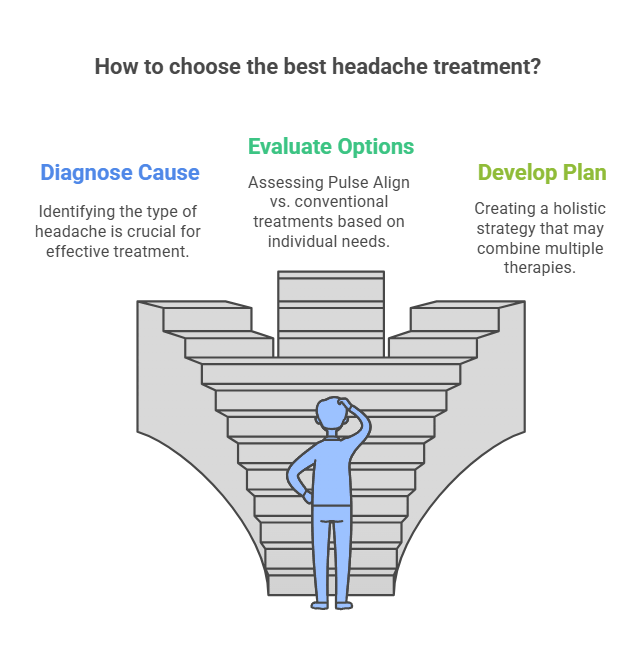
Managing headaches and migraines effectively requires exploring all available options to find the solution that best fits your unique needs. Pules Align and conventional alternative treatments like acupuncture, massage therapy, and herbal remedies each offer distinct benefits for headache and migraine relief. By understanding the potential of these approaches, you can make informed decisions that enhance your quality of life.
Pules Align stands out as a revolutionary, non-invasive technology designed to manage muscle tone and recalibrate posture, addressing the physical contributors to headaches and migraines. Its affordability, accessibility, and ease of use make it an attractive option for those seeking sustainable relief without the need for frequent clinic visits or ongoing expenses associated with other treatments.
On the other hand, conventional alternatives such as acupuncture, massage therapy, and herbal remedies offer their own unique advantages. Acupuncture and massage therapy provide immediate relief by reducing muscle tension and promoting relaxation, while herbal remedies offer natural, chemical-free options for preventing and alleviating headache symptoms. Each of these methods has garnered positive user reviews, highlighting their effectiveness and holistic benefits.
While Pules Align has shown promising results and received positive feedback from users, it is essential to acknowledge the need for further research to fully understand its long-term efficacy and potential benefits. Ongoing studies and clinical trials will help solidify Pules Align’s place in headache and migraine management, ensuring that it continues to meet the needs of those seeking relief.
Choosing the right treatment for headaches and migraines is a highly individualized process. It’s important to explore different options and consider factors such as headache type, personal preferences, budget, and accessibility. Collaborating with healthcare professionals can provide valuable insights and guidance, helping you develop a comprehensive and personalized treatment plan that maximizes effectiveness and supports your overall well-being.
Don’t let headaches and migraines control your life any longer. Pules Align offers a simple, amazing, and accessible solution to help you achieve lasting relief and improve your quality of life.
Empower yourself with the knowledge and tools needed to manage your headaches and migraines effectively. Pules Align is here to support you on your journey to a pain-free, healthier life.